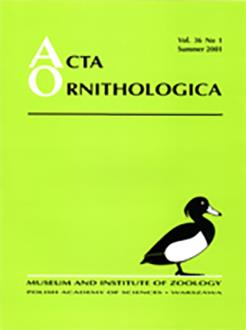With a population of probably less than 50 individuals, the Slender-billed Curlew is one of the most seriously endangered species in Europe. The scarcity of information on its biology and the fact that its breeding grounds are still unknown are major constraints on its conservation. This paper presents the activities of the Working Group established under the Bonn Convention. Recent intensive efforts to locate breeding areas are described. All records are kept in a specific BirdLife International database. Although hunting is considered to have been the major reason for the species' dramatic decline and is still an important threat, overgrazing of steppes and drainage of wetlands in northern Kazakhstan and south-western Siberia have caused the loss of a number of possible breeding sites recently identified.
How to translate text using browser tools
1 July 2001
The Slender-billed Curlew Numenius tenuirostris: Threats and Conservation
Umberto Gallo-Orsi,
Gerard C. Boere
S. T. Aksakov
1852. [Notes of the game-hunter from Orenburg region]. Moscow, University printing House. 415 pp. Google Scholar
V. P. Belik
1994. [Where the Slender-billed Curlew (Numenius tenuirostris) breeds?]. In:
E S. Tomkovich (ed.).
[Inform. Mat. Working Group Waders] 7: 30–32. Google Scholar
G. C. Boere
,
A. K. Yurlov
1998. In search of the Slender-billed Curlew (Numenius tenuirostris). Preliminary results of an expedition to wetlands and waterbirds of the Baraba and Karasuk steppe in the south of West Siberia, Russian Federation, 17 May-22 June 1997. Wader Study Group Bull. 85: 35–38. Google Scholar
W. Cresswell
,
S. Yerokhov
,
N. Berezovikov
,
R. Mellanby
,
S. Bright
,
P. Catry
,
J. Chaves
,
J. Freile
,
A. Gretton
,
A. Zykin
,
R. McGregor
,
D. McLaughlin
1999. Important wetlands in northern and eastern Kazakhstan. Wildfowl 50: 181–194. Google Scholar
K. Danileko
,
G. C Boere
,
E. A. Lebedeva
1996. Looking for the recent breeding grounds of Slender-billed Curlew: a habitat-based approach. Wader Study Group Bull. 81: 71–78. Google Scholar
A. Gretton
1991. Conservation of the Slender-billed Curlew. ICBP Monograph No. 6: International Council for Bird Preservation. Cambridge, 159 pp. Google Scholar
A. Gretton
1994. An estimate of the current population of the Slender-billed Curlew. In: European Commission: Preparation d'un plan de sauvage pour Numenius tenuirostris, Rapport final. Vol. 2. Annexes (annex 5). Google Scholar
M. F. Heath,
M. I. Evans (eds.).
2000. Important Birds Areas in Europe: Priority sites for conservation. Vol. 2. Cambridge, UK: BirdLife International. BirdLife Conservation Series No. 8. Google Scholar
E. Nowak,
D. Vangeluwe
1999. In search for the breeding grounds of the Slender-Billed Curlew Numenius teuirostris.
In: Concervation actions for the Slender-billed Curlew. Final report to the EU Commision, Athens. Google Scholar
V. E. Ushtakov
1912. [More on Slender-billed Curlew in the Tara district]. Nasha Okhota 17: 27–32. Google Scholar
V. E. Ushtakov
1916. [Nest and eggs of the Numenius tenuirostris Vieill]. Ornitologicheskiy Vestnik 3: 185–187. Google Scholar
V. E. Ushtakov
1925. [Colonial breeding of the Slender-billed Curlew in the Tara district of the Omsk region]. Uralskiy Okhotnik 3: 32–35. Google Scholar
A. K. Yurlov
1989. [On the studies of Slender-billed Curlew], In: [Inform. Mat. Working Group Waders] 2: 33–34. Google Scholar
A. K. Yurlov
1992. The investigation of potentially breeding sites of the Slender-billed Curlew in 1990. In: [Inform. Mat. Working Group Waders] 5: 28. Google Scholar

Acta Ornithologica
Vol. 36 • No. 1
July 2001
Vol. 36 • No. 1
July 2001
conservation
Numenius tenuirostris
Slender-billed Curlew




